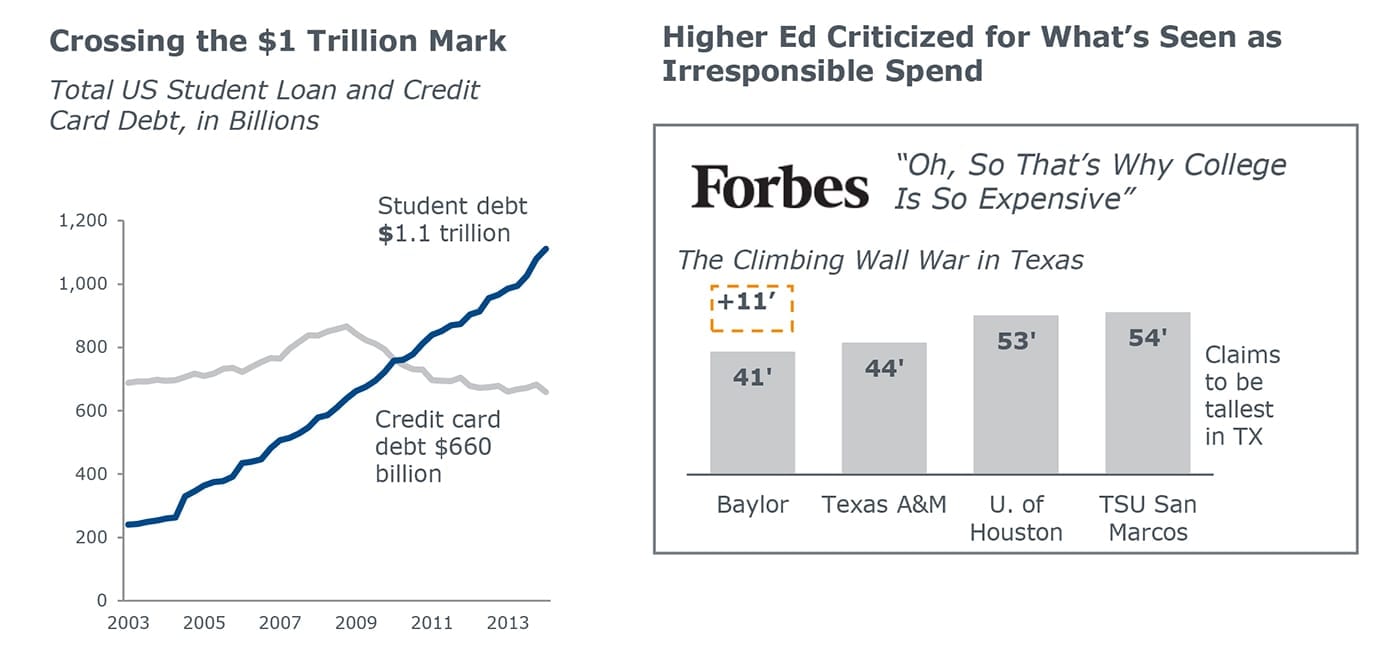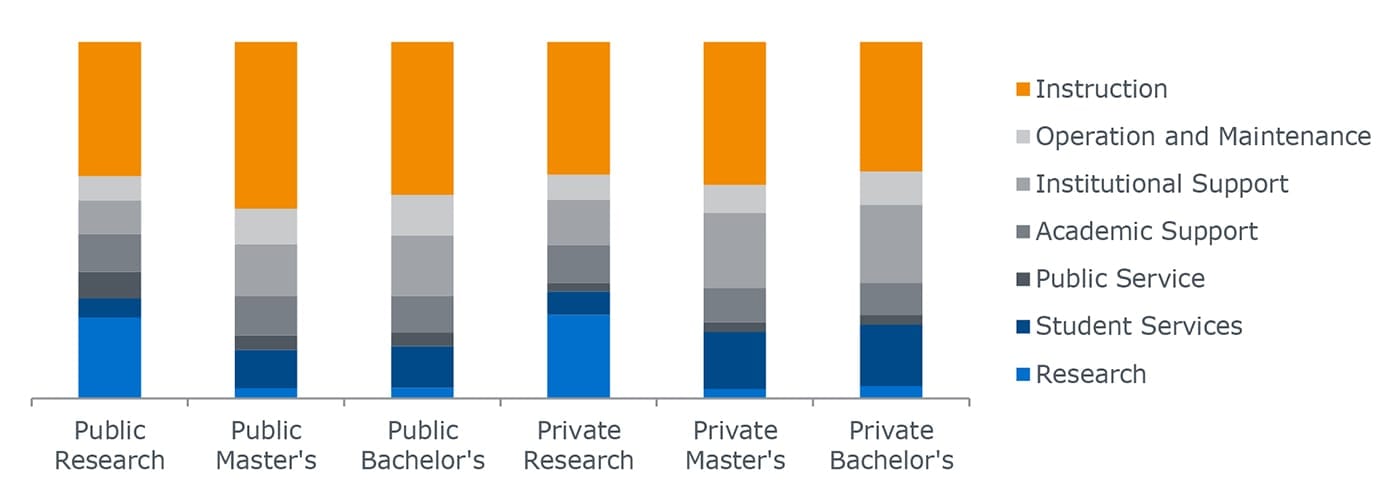As student loans surpass credit card debt as the largest source of consumer debt in the United States, many higher education institutions face increased public scrutiny around costs. In responding to critics, higher education leaders must not only bust myths about the high cost of campus amenities, but also make clear that the cost of instruction and running a complex business model are the true drivers of college costs.
Detractors have been quick to blame the so-called “amenities arms race” for the ballooning costs of college. In the competition to enroll prospective students, institutions have invested in flashy facilities like lazy rivers and climbing walls. Some critics point to a competition between several Texas universities to build the tallest climbing wall in the state as a prime example of irresponsible spending on luxurious frills.

But does this spending really drive up the cost of college? In fact, these types of expenditures account for only a fraction of institutions’ operating budgets. A typical climbing wall costs $100,000, a one-time expense that represents a minuscule .001% increase to a $100 million operating budget. These projects aren’t funded by tuition—they’re funded by fee increases that students themselves elect to pay.
The high price tag of instruction
1/3

In reality, the main driver of college costs is one of higher education’s core functions: teaching students. Institutions spend more per student on instruction than on any other category of expenses. The cost of instruction makes up between one-third and one-half of all spending across institutions of every Carnegie Classification®.
The cost of instruction has provoked some criticism that faculty are overpaid for their work. But with a median annual salary of $71,000 in 2014, compensation for college faculty members falls well behind that of fellow highly educated, highly skilled professionals, including lawyers ($115,000), dentists ($154,000), and physicians ($187,000). Faculty ineligible for tenure, which make up two-thirds of the overall faculty work force, make even less money.

$71,000

Operations remain costly and unwieldy
In many ways, the facilities and services needed to operate a college campus resemble a small city. Higher education institutions are responsible for an unusually wide array of expenses—from feeding lab rats in the science building to insuring fine art in the museum. Colleges and universities are also vulnerable to fluctuations in the prices of commodities, utilities, and labor. If the cost of heating and cooling a building or of supplying fresh meat and produce to the dining hall increase, school budgets must find a way to accommodate that.

However, most institutions aren’t increasing Facilities spending at the same rate as spending in other parts of the institution, and at most public institutions, operations and maintenance spending per student is actually declining. This is at odds with the increasing costs of campus operations. Inadequate Facilities funding means Facilities can fall behind, ultimately contributing to deferred maintenance backlogs.
Meanwhile, colleges and universities must also invest substantial financial and human resources into complying with a growing number of federal and state regulations. A 2014 Boston Consulting Group assessment of compliance costs at Vanderbilt University found that the institution spends $146 million on compliance annually; that amounts to roughly $11,000 per student.
Research universities aren’t the only institutions facing steep compliance costs. Small institutions shoulder a disproportionately large compliance burden, given their smaller operating budgets and lack of specialized staff. When faced with new regulations, many small colleges face the difficult choice between hiring new staff members or assigning additional compliance duties to existing staff, which can stretch human resources thin. A study at Hartwick College, which has 1,600 students, showed that existing staff spend 7,300 hours each year on compliance activities alone—that’s the equivalent workload of more than three full-time staff members.
This article was adapted from Academic Affairs Forum research.
100 creative strategies to bridge the capital renewal funding gap
The Capital Renewal Funding Playbook was created to address the deferred maintenance backlog, a huge and growing problem almost all campuses face. Download now to read through our 10 executive-level lessons and 100 creative tactics for institutions seeking realistic funding opportunities.